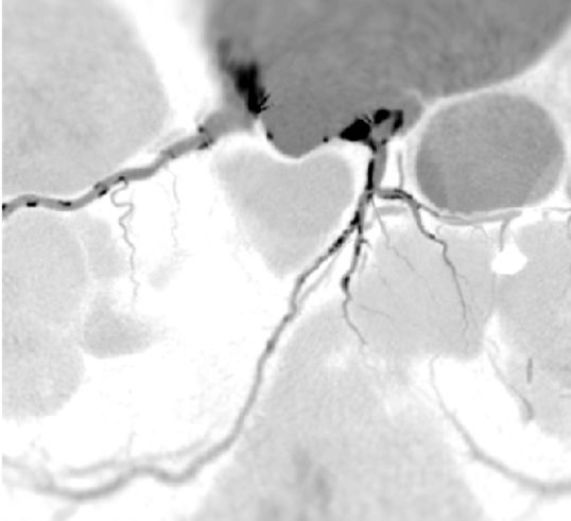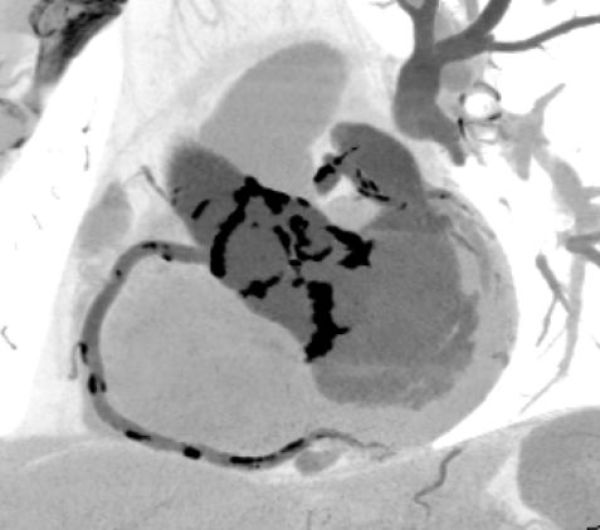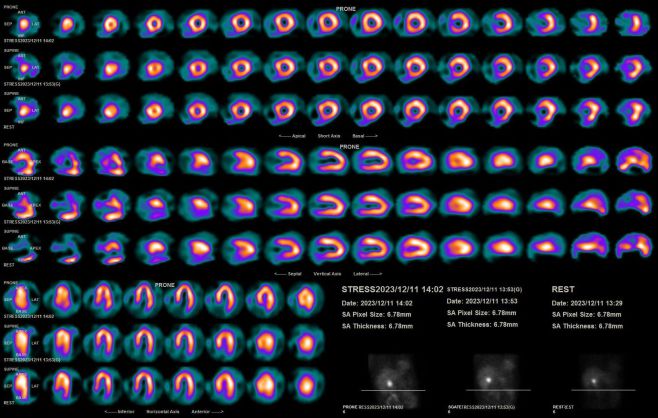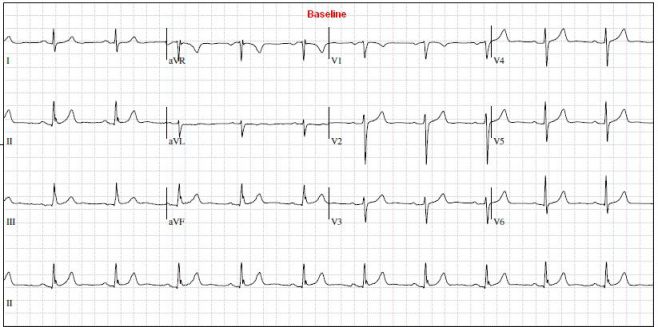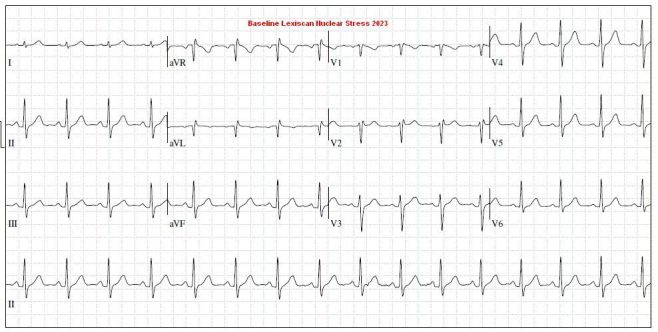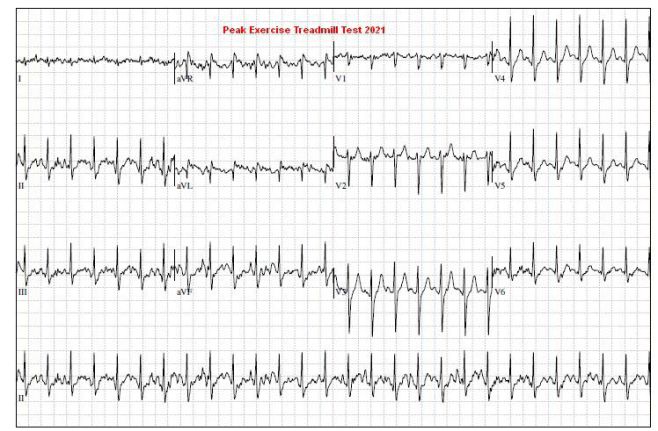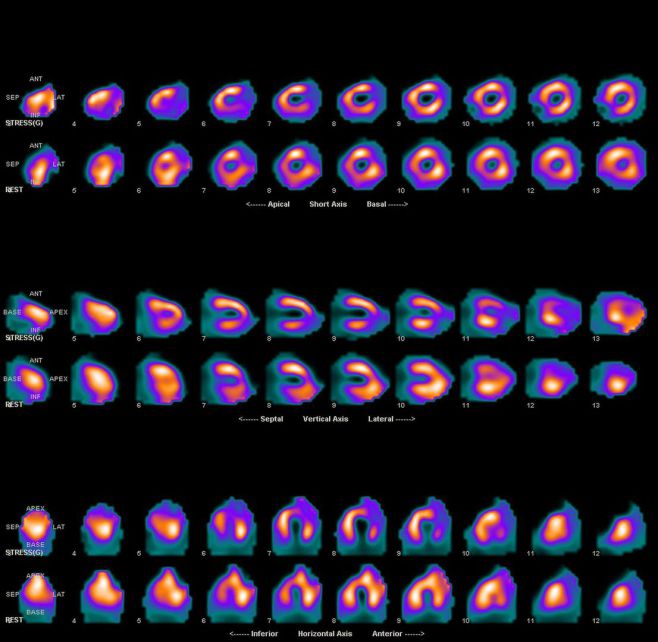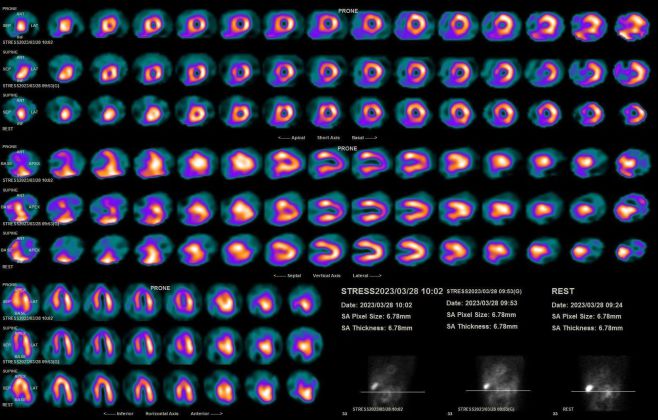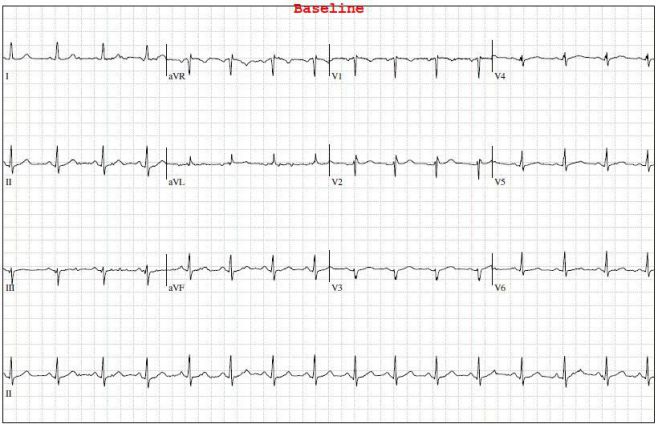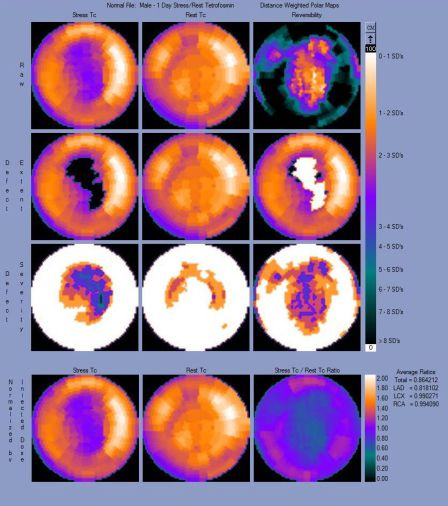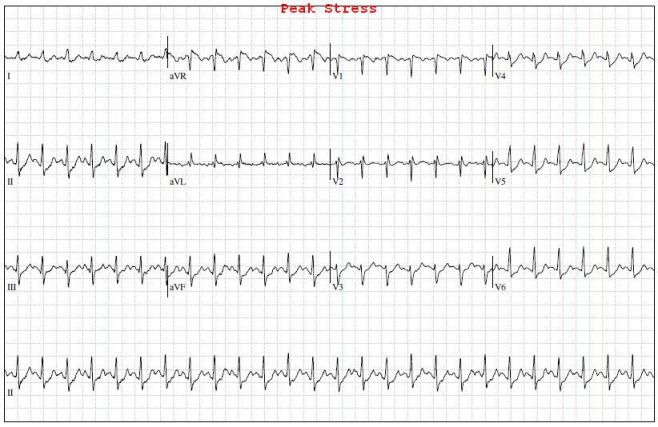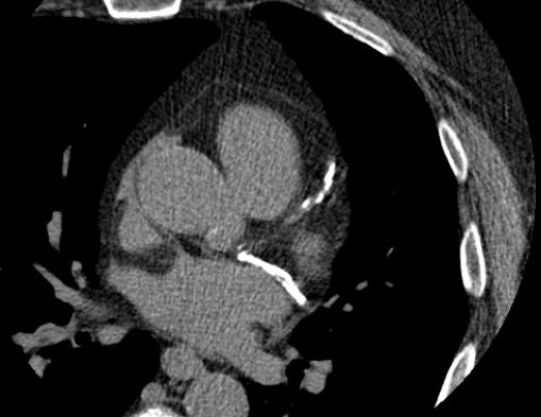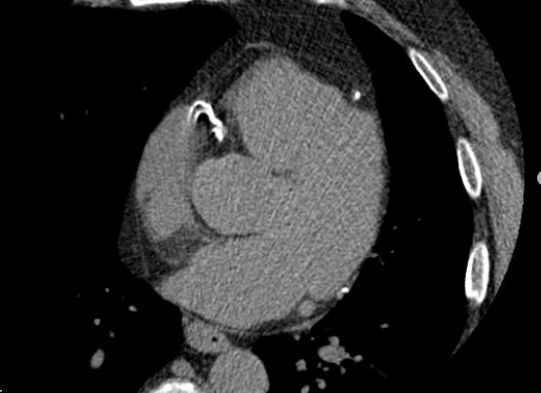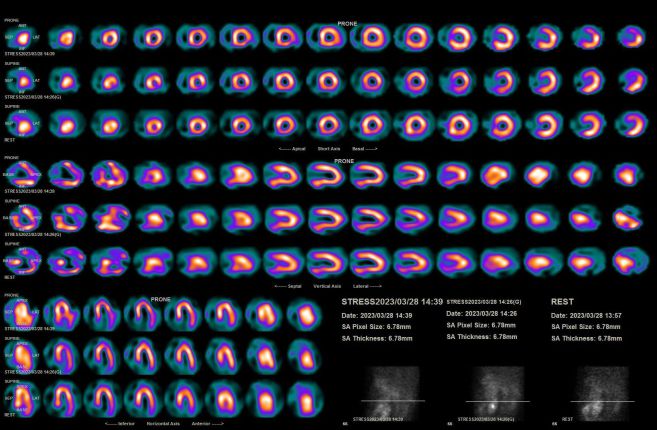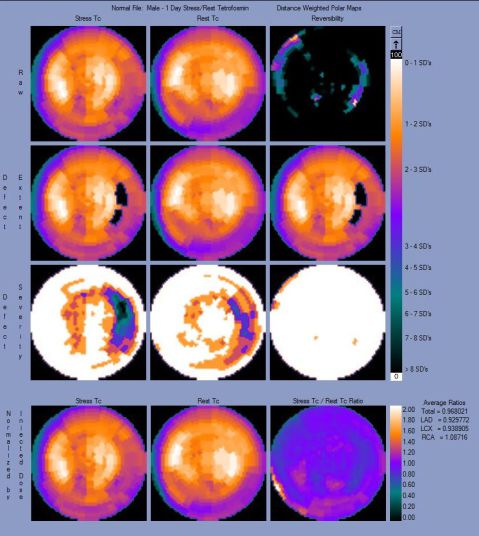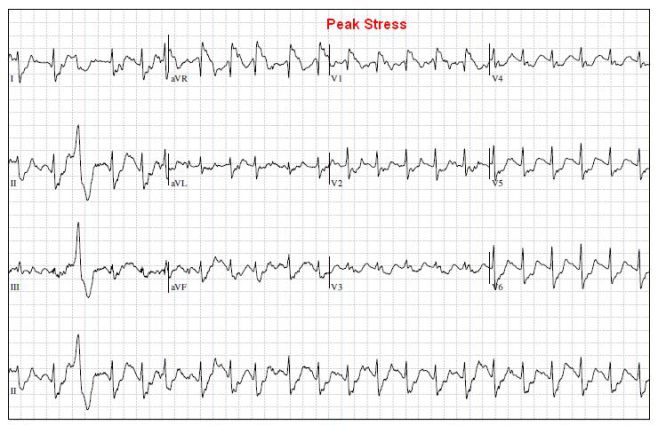2023 Blog Entries
12/12/2023
73 y/o male with a family history of CAD, hypertension, and hyperlipidemia, overall asymptomatic.
CCTA ordered showed a calcium score of 1,262 with moderate to severe stenosis found in the left-main, LAD, RCA, and
Circ..
Exercise myocardial perfusion imaging was performed. Testing found uniform perfusion, a normal ejection fraction, no ischemic EKG changes during a respectable
7 minutes in Bruce protocol without any limiting symptoms.
Somewhat tempted to contact our Cleerly rep. for a pro-bono AI-QCT plaque analysis along with their ISCHEMIA snapshot index (equivalent to FFRCT) to challenge
SPECT's findings.
11/7/2023
"The ABIM has grown into a $55-million-per-year business, unfettered by competition, selling proprietary, copyrighted products. We would all benefit if other
organizations stepped up to compete with the ABIM, offering alternative certification options.”
ABCVM would be an independent, self-governed body, by and for cardiologists, and committed to a streamlined, transparent, and accountable process of initial
and ongoing certification.
10/4/2023
There absolutely has to be more discussion on why insurers, more so CMS, have devalued coronary/cardiac CTA, especially when considering how many adjunct
technologies, such as Cleerly, Heartflow, and Elucid, are supplementing higher accuracy exams.
To further illustrate how poor current Medicare reimbursement is, just to cover your average 128 slice CT scanners monthly lease and service costs, one would
have to perform ~30 coronary/cardiac CTA exams to break even.
10/1/2023
Two words: Sushi - Tritium. Don't understand the relevance? Then read this Substack!
9/23/2023
Per National Frequency Agency (ANFR) - "These requirements imply that devices are assessed at body contact for “limb” SAR – i.e. a phone held in the hand or in
a trouser pocket – and at a distance of 5 mm for “limb” SAR trunk” – that is, a phone carried in a jacket pocket or bag. They must therefore respect the regulatory limit values of 4 W/kg for
the “limb” SAR and 2 W/kg for the “trunk” SAR. ANFR measurements revealed a “member” SAR value exceeding this limit, i.e. 5.74 W/kg.
Wonder how the French feel about this decision?
9/1/2023
Anytime I review an MPI (Myocardial Perfusion Imaging) study in the setting of normal perfusion, I'm always reminded of this 2013 JNC study from The Netherlands. They took 256 patients with a 'normal' MPI (1-day Tetrofosmin protocol, all
pharmacologically stressed) who had invasive angiography because of persisting or worsening initial symptoms. Significant CAD was defined as stenosis > 70% or LM >
50%.
A total of 93 patients (36%) had significant CAD. Surprisingly, unprotected left main disease and/or three-vessel disease were present in only 11% of the
patients with significant CAD. The majority of patients with significant CAD had single vessel disease, without a preference for a particular coronary artery. These findings suggest that balanced
ischemia as a cause of false-negative MPI may be less important than previously thought.
8/14/2023
A great example of rapidly progressing coronary artery disease: here's a 48 year old male having only elevated LDL's and triglycerides for risk
factors.
During late 2021, he was seen for nocturnal palpitations. An echocardiogram, exercise treadmill stress test, and calcium scoring scan were ordered. The
echocardiogram showed normal cardiac structure and function, the treadmill stress test (11 minutes with Bruce protocol) was negative for ischemia and negative for arrhythmias, and the calcium score
was found to be zero.
Fast forward to 2023, he's seen because of chest pains that radiate to his back, and jaw. Pharmacologic myocardial perfusion imaging was performed. Patient
experienced moderate chest pain after administering regadenoson as well as producing an ischemic EKG response. A large, reversible defect is seen in the anterior wall suggesting severe obstructive
left main disease. Transient ischemic dilatation(TID) was 1.6. Excess activity adjacent to the inferior wall believed to be from long term PPI use. The patient subsequently underwent coronary artery
bypass grafting(CABG).
7/6/23
A cautionary reminder that the frequency of atherosclerotic plaque with a zero calcium score is relatively high (~10%), indicating that the absence of
calcification does not exclude the presence of plaques, many of which are obstructive. Below is a patient with a newly diagnosed left bundle branch block with a calcium score of 8. Having this low of
a score typically carries a low risk for future cardiac events. Pharmacologic perfusion imaging was performed which highlighted reversibility in multiple segments. Cardiac catheterization confirmed
severe obstructive disease in both the left anterior descending and circumflex coronary arteries.
7/5/23
Radioactive products aimed to cure ailments, like the RadiThor energy-drink sold in the 1920's, still unfortunately exist
today.
This YouTube video exploited a company claiming its card "Helps to raise your
vibration frequency, aligns your chakras, restructures the Aura, gives a greater energy and functional balance in your organs, activates cellular metabolism, increases oxygen levels in the body,
improves vitality, strength, endurance, stability, balance, muscle pain, emotional and mental stability, and protects from negative energies and electromagnetic
radiation."
What they didn't tell the consumer is it contained trace amounts of Thorium and Uranium.
5/22/23
As I've mentioned in prior posts, there are more than 600 hospitals at risk of closure across the U.S.. Half the hospitals in rural Georgia alone are reporting losses on patient services. Congress needs to act NOW before healthcare succumbs to a cataclysmic scenario!
5/19/2023
More awareness is being shed on SCAD, otherwise known a Spontaneous Coronary Artery Dissection, which most commonly affects women in their 40s and 50s, though
it can occur at any age and can occur in men. People who have SCAD often don't have risk factors for heart disease, such as high blood pressure, high cholesterol or
diabetes.
Over my 23 year career, I've only seen it once in the nuclear cardiology lab, and because of its rarity - I actually saved the study! Attached are the
myocardial perfusion findings of a 43 year old women with a history of chest-pain on exertion. Before some of you criticize the quality of the perfusion images, please know she had extremely dense
breast implants that severely impacted the count rate. Stress EKG was found to be ischemic, as well as reversibility in the lateral and inferoapical walls. The cardiac catheterization showed a
dissection in the LCx's OM2 branch.
Here's a wonderful presentation on SCAD and what's currently known in 2023:
https://lnkd.in/gpr2VSac
5/5/2023
In Chapter 9 of Ellestad's Stress Testing: Principals And Practice Six Edition the authors go into extreme depth on EKG changes during exercise and recovery.
There is a very interesting section that goes into more detail on how the Ta wave (atrial repolarization, buried behind QRS) can impact the PR segment thereby predicting a false-positive EKG response
in the setting of ST depression. Basically - the more leads in which PR (Ta wave influenced) depression occurred, the more likely the test was to be false-positive. Having worked in a nuclear
cardiology lab for over twenty years, I'm highly incredulous of what's being suggested. When interpreting stress EKG's, do any of you take into account whether or not PR depression is present or
not?
5/01/23
Perhaps the most controversial topic of stress testing EKG's is upsloping ST depression. Depending on your literature of choice, typically we're looking for =/>1.5mm to be labelled as an ischemic response. Attached you'll see the stress EKG's from a 45 y/o male with complaints of chest-burning sensations all throughout the day. At peak exercise ~1mm of anterolateral upsloping ST depression is present. Total exercise duration (Bruce protocol) was 6:31 with the patient experiencing fatigue and 'chest heaviness.' Perfusion images show reversibility in the anterior, septal, inferior, and apical walls. Ejection fraction was preserved at 72%. Cath showed 100% mid-LAD and 90% RCA lesions.
4/25/2023
I'm sooooooo confused. Didn't we just repeal SGR in April of 2015? And
now there's a bill to reinstate it?
A brief history
lesson: Put in place through the Balanced Budget Act of 1997, the SGR was a system designed to control the costs of Medicare payments for physicians. The
SGR formula was aimed at limiting the annual increase in cost per Medicare beneficiary to the growth in the national economy. The SGR is layered on top of a system for paying physicians known as a
“physician fee schedule.” Although many people don’t realize it, one key feature of the SGR formula is that it applied only to physician services under Medicare Part B. Specifically, the SGR formula
did not affect or apply to hospital reimbursement rates.
The SGR formula attempts to rein in Medicare costs at a constant proportion of the federal budget by tying the Medicare budget to the Gross Domestic Product
(GDP). For the first time in U.S. history, healthcare spending was tied directly to the country’s economic performance.
Although the SGR was created to keep Medicare from overtaking the federal budget by tying target expenditures to the GDP, its formula includes a fatal flaw.
The goal of the SGR was simple: to balance the target and actual expenses of Medicare. The catch, however, is that any yearly deficit is carried forward and will influence the next fiscal
year.
Fast forward to April 2015, Medicare's sustainable growth rate (SGR) formula for controlling physician payment was permanently repealed and replaced with
a far-reaching package of reforms.
HR 2474, the Strengthening Medicare for Patients and Providers Act, was first introduced to the House on April 6 2023. The bill would tie the annual
Medicare physician fee schedule to the Medicare Economic Index, a move designed to provide physicians with reimbursement rates that accurately reflect the state of the U.S. economy - Deja Vu
anyone?
4/17/2023
Perhaps the most controversial topic of stress testing EKG's is upsloping ST depression. Depending on your literature of choice, typically we're looking for
=/>1.5mm to be labelled as an ischemic response. Attached you'll see the stress EKG's from a 45 y/o male with complaints of chest-burning sensations all throughout the day. At peak exercise ~1mm
of anterolateral upsloping ST depression is present. Total exercise duration (Bruce protocol) was 6:31 with the patient experiencing fatigue and 'chest heaviness.' Perfusion images show reversibility
in the anterior, septal, inferior, and apical walls. Ejection fraction was preserved at 72%. Cath showed 100% mid-LAD and 90% RCA lesions.
3/30/2023
A classic case of SPECT based myocardial perfusion imaging underestimating the presence of severe CAD. 67 Y/O male with a history of hypertension, hyperlipidemia, abnormal EKG, and shortness of breath. Baseline EKG shows a right bundle-branch block. Peak stress shows diffuse ST depression. Perfusion images depict mild reversibilities inferior, inferolaterally with a normal ejection fraction at 60%. Because of the ischemic EKG response with exercise, a calcium scoring scan was performed which was a whopping 5300 (ideally you want 0).
2/28/2023
Kaufman Hall releases yet another in-depth financial analysis based off 900 national Hospitals.
Key points when compared to 2020:
1. Hospitals continue to operate at razor thin margins.
2. Total expenses are up 18%
3. Labor expenses are up 21%
3. Supply costs are up 12%
4. Drug expenses are up 12%
2/27/2023
New business idea: real-time wireless, 4G/5G dosimeters accessible to the general public. Why? Read this article!
1/22/2023
32% of Georgia's hospitals are at risk for closure over the next year. In other states such as Hawaii, Connecticut, and Alabama, more than half of the
hospitals could possibly be shutting their doors.
The alarm bells should surely be ringing within Congress?
With post-pandemic healthcare needs in high demand, how will the remaining institutions adjust to this growing lack of accessibility?
1/10/2023
Latest case study of a proximal-to-mid 100% LAD occlusion. 69 year-old male with complaints of upper back, neck, shoulder pains. Transient ventricular tachycardia occurred during exercise.
Septal/high-lateral EKG ST elevation and reciprocal ST depression was seen at peak. TID was abnormal at 1.3. Ejection fraction was preserved at 52%, however there was an anteroseptal
wall-motion/thickening abnormality present.


